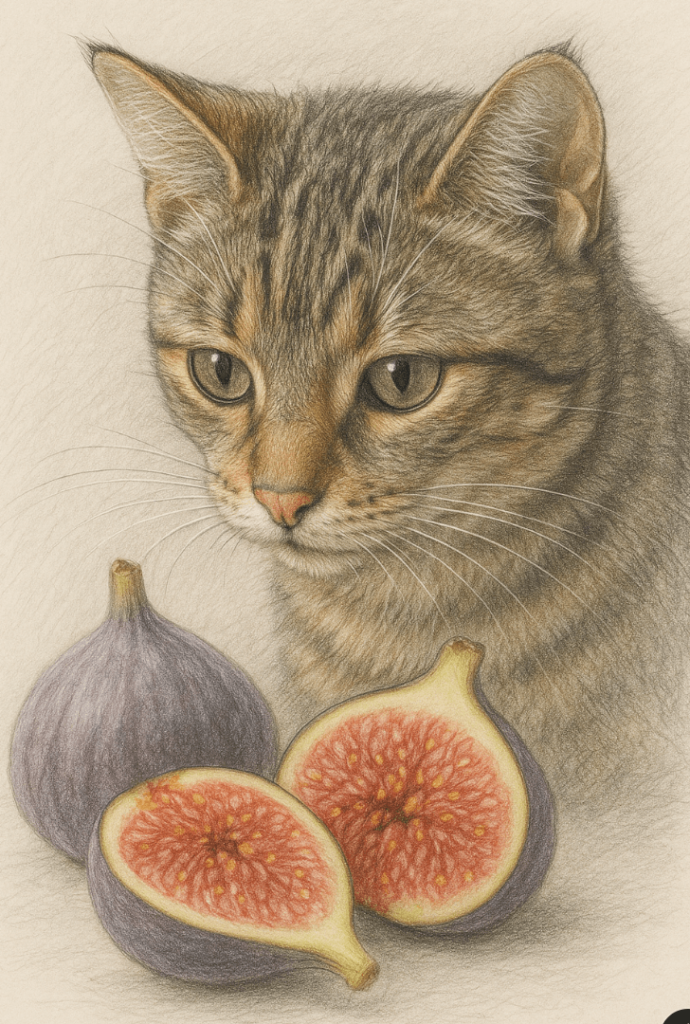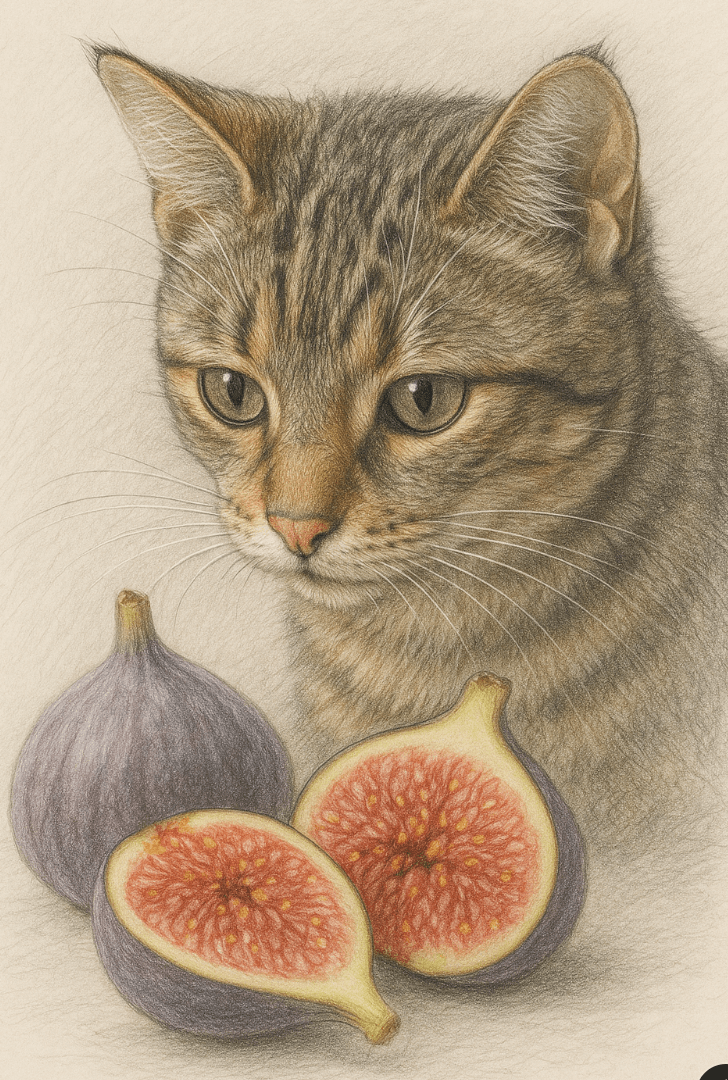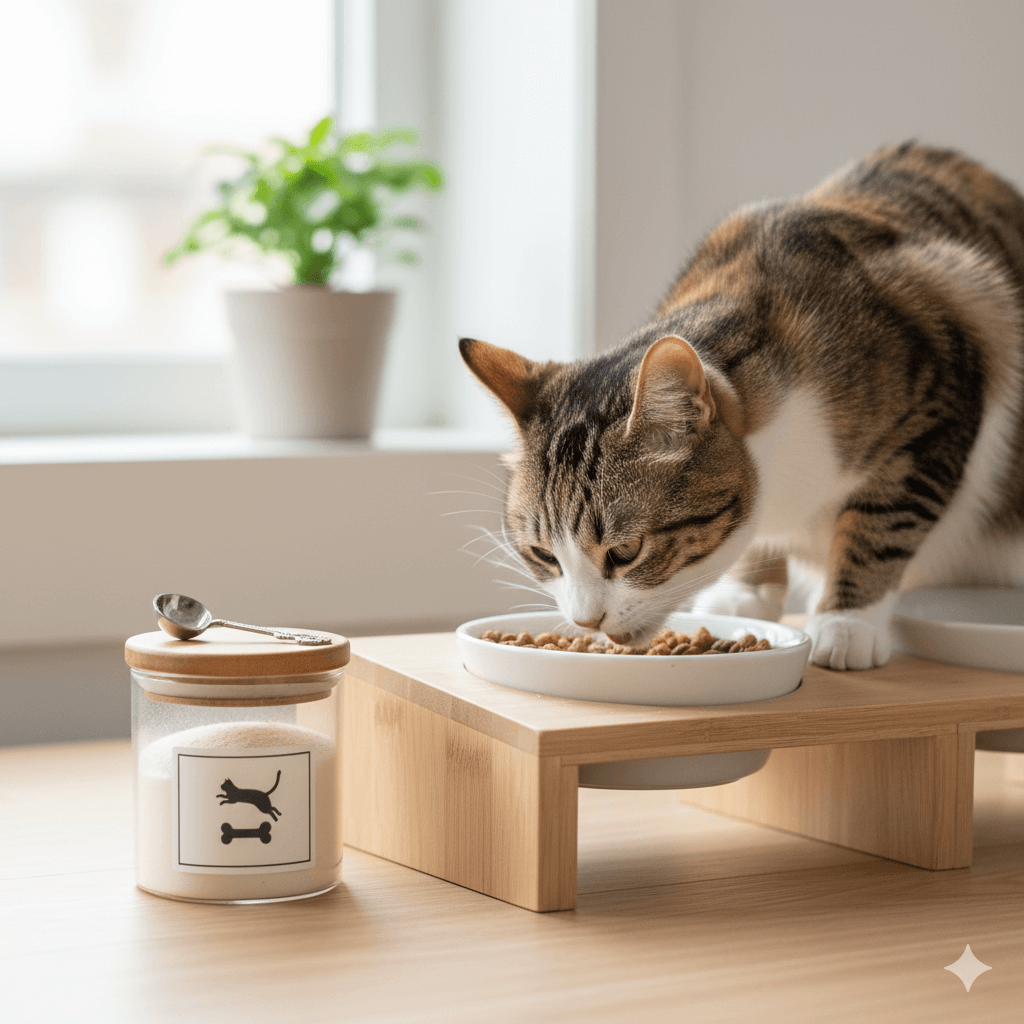Can Cats Eat Figs? What You Need to Know
Figs are a delicious and nutritious snack for humans, but when it comes to our feline friends, the rules change. Many cat owners wonder whether figs are safe for their pets or if they pose potential risks. While cats are obligate carnivores and don’t need fruits in their diet, some may show curiosity about figs or other human foods. Understanding whether figs are safe—and under what circumstances—is essential to ensure your cat’s health and well-being. In this blog post, we’ll explore everything you need to know about feeding figs to cats, including potential benefits, risks, and safer alternatives.
Potential Risks of Feeding Figs to Cats
While figs are generally harmless to humans, they can pose several risks to cats due to their unique physiology and dietary needs. Here are some important considerations to keep in mind before offering figs to your feline companion.
Toxic Compounds:
Figs contain psoralens and ficin, which can be toxic to cats if ingested in large quantities. These compounds may cause gastrointestinal upset or skin irritation.High Sugar Content:
Figs are naturally high in sugar, which can disrupt your cat’s blood sugar levels and lead to obesity or diabetes over time.Choking Hazards:
The small seeds in figs can pose a choking risk, especially for curious cats who may swallow them whole.Digestive Issues:
Cats lack the enzymes needed to digest plant-based foods efficiently, making figs difficult for them to process and potentially causing vomiting or diarrhea.Allergic Reactions:
Some cats may develop allergic reactions to figs, such as itching, swelling, or respiratory distress, though this is rare.
These risks highlight why caution is essential when introducing figs—or any human food—to your cat’s diet.
Possible Benefits of Figs for Cats (When Given Safely)
While figs aren’t a necessary part of a cat’s diet, they do offer some minor benefits when given in extremely small amounts. However, these advantages must be weighed against the potential risks.
Dietary Fiber:
The fiber in figs can aid digestion, though cats typically meet their fiber needs through their regular diet.Hydration Support:
Fresh figs have a high water content, which can contribute to your cat’s hydration if they’re reluctant drinkers.Vitamins and Minerals:
Figs contain small amounts of potassium, magnesium, and vitamin K, which can support overall health in moderation.Mental Stimulation:
Offering a tiny taste of fig as an occasional treat can satisfy your cat’s curiosity and provide enrichment.Variety in Diet:
For cats who enjoy exploring new flavors, figs can add a touch of novelty to their routine—though sparingly.
While these benefits exist, they should never outweigh the importance of prioritizing your cat’s primary dietary needs.
Check this guide 👉Can Cats Eat Scallops? Best 7 Expert Tips!
Check this guide 👉Can Cats Eat Ladybugs? Best 7 Expert Tips!
Check this guide 👉Can Cats Eat Nectarines? Best 7 Expert Tips!

Safe Alternatives to Figs | Risks of Unsafe Foods for Cats |
|---|---|
Plain cooked chicken (no seasoning) | Chocolate, caffeine, and alcohol |
Blueberries (in moderation) | Grapes, raisins, and currants |
Pumpkin puree (unsweetened) | Onions, garlic, and chives |
Watermelon (seedless) | Raw yeast dough and raw eggs |
Cat-safe treats from pet stores | Dairy products (due to lactose intolerance) |
How to Safely Introduce Figs to Your Cat
If you decide to give your cat a taste of fig, it’s crucial to proceed with caution and follow these guidelines to minimize risks.
Offer Tiny Portions:
Limit the amount to a small sliver of fresh fig, ensuring it doesn’t exceed more than a bite.Remove Seeds and Skin:
Seeds and skin can be difficult to digest; remove them before offering the fig to your cat.Monitor for Adverse Reactions:
Watch for signs of digestive upset, allergic reactions, or behavioral changes after consumption.Avoid Processed Figs:
Dried figs or those coated in sugar or preservatives are unsafe for cats and should be avoided entirely.Consult Your Veterinarian:
Always seek professional advice before introducing new foods to your cat’s diet, especially unconventional ones like figs.
By following these steps, you can ensure that any exposure to figs remains safe and controlled.
Signs Your Cat May Have Eaten Something Harmful
Even with precautions, accidents can happen if your cat gets into figs or other unsafe foods. Recognizing these warning signs allows you to act quickly and prevent further complications.
Vomiting or Diarrhea:
Gastrointestinal distress is a common sign of food poisoning or ingestion of harmful substances.Lethargy or Weakness:
A sudden drop in energy levels could indicate toxicity or dehydration caused by eating something inappropriate.Excessive Drooling:
Drooling may signal nausea or irritation in the mouth or throat from consuming toxic foods.Difficulty Breathing:
Labored breathing could indicate an allergic reaction or blockage in the airway.Loss of Appetite:
Refusal to eat is a red flag that something is wrong and requires immediate attention.
Recognizing these symptoms early ensures prompt veterinary care and peace of mind for both you and your cat.
Common Mistakes to Avoid When Feeding Figs to Cats
Feeding figs to cats requires careful consideration to avoid mistakes that could endanger their health. Here are some pitfalls to watch out for.
Giving Too Much:
Even a small fig contains too much sugar and fiber for a cat’s sensitive digestive system. Stick to minuscule portions.Ignoring Allergies:
Not all cats tolerate figs well; ignoring signs of allergies can lead to serious complications.Leaving Figs Within Reach:
Curious cats may help themselves to figs left unattended, leading to accidental ingestion and potential harm.Assuming All Parts Are Safe:
The seeds, skin, and leaves of figs are particularly problematic and should never be fed to cats.Skipping Veterinary Advice:
Always consult your vet before introducing new foods, as they can provide personalized guidance based on your cat’s health.
Avoiding these mistakes ensures a safer experience for your cat.
Healthier Treat Options for Cats
Instead of figs, consider these healthier and safer treat options that align better with your cat’s dietary needs.
Cooked Chicken or Turkey:
Lean meats are a protein-rich treat that cats love and benefit from nutritionally.Catnip or Silver Vine:
These herbs provide mental stimulation and enjoyment without posing health risks.Freeze-Dried Liver Snacks:
Available at pet stores, these treats are packed with nutrients and highly palatable for cats.Small Pieces of Banana:
Bananas are low in sodium and can be offered sparingly as a sweet treat.Unsweetened Pumpkin Puree:
This fiber-rich option supports digestion and can help resolve mild constipation or diarrhea.
These alternatives cater to your cat’s natural preferences while keeping them safe and healthy.
Understanding Your Cat’s Natural Instincts Around Food
Cats are naturally curious creatures, and their instincts drive them to investigate new scents and textures—including figs. Understanding their behavior helps explain their fascination.
Hunting Behavior:
Cats explore food items similarly to how they would investigate prey, using their sense of smell and touch.Curiosity About Human Food:
Cats often mimic their owners’ habits, showing interest in foods they see you eating.Taste Preferences:
Unlike humans, cats lack specific taste receptors for sweetness, so they’re unlikely to crave figs for flavor alone.Exploratory Chewing:
Chewing on objects, including food, satisfies their instinctual need to explore their environment.Territorial Marking:
Cats may nibble on or carry off food items as a way to assert ownership or relieve stress.
By recognizing these behaviors, you can better address your cat’s curiosity in a safe and controlled manner.
Frequently Asked Questions About Cats and Figs
Are fig leaves safe for cats?
No, fig leaves contain toxic compounds that can irritate your cat’s skin or cause poisoning if ingested.
Can kittens eat figs?
Kittens are more vulnerable to toxins and should avoid figs altogether to prevent potential harm.
What should I do if my cat eats a fig?
Monitor your cat closely for adverse reactions and contact your vet if you notice any concerning symptoms.
How often can I give my cat figs?
Figs should only be given as an occasional treat, if at all, and in very small amounts.
What fruits are safe for cats?
Safe options include blueberries, watermelon (seedless), and small pieces of banana or apple (without seeds).
Prioritizing Your Cat’s Health When It Comes to Figs
While figs might seem like a harmless treat, they come with significant risks for cats that cannot be ignored. As obligate carnivores, cats thrive on a diet rich in animal-based proteins and fats, leaving little room for fruits like figs. If you choose to share a tiny piece of fig with your cat, always prioritize safety and moderation. However, there are plenty of safer alternatives available that provide enrichment without jeopardizing your cat’s health. Remember, your veterinarian is your best resource for dietary advice tailored to your feline friend’s unique needs. By staying informed and cautious, you can ensure your cat enjoys a happy, healthy life free from unnecessary risks.
Understanding Bone Supplement for Cats: Best 7 Expert Tips! – Safe, vet-approved guidance for strong feline bones & balanced nutrition.
Bone Supplement for Dogs: Best 7 Expert Tips! – Expert guide to calcium, collagen & bone health for every life stage.
Understanding Can Cats Get Sunburn: Best 7 Expert Tips! – Protect your feline from UV damage with vet-backed prevention strategies.
How to Train a Seizure Alert Dog: Best 7 Expert Tips! – Learn expert-backed steps to nurture natural instincts into reliable, life-saving seizure alerts.





